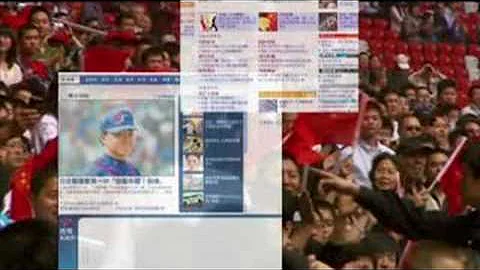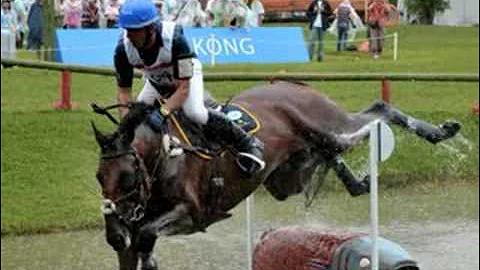Hello everyone, I am a reader. Follow me and I will take you into a different world of culture and history.
In this lecture, we enter the thirty-fifth year of the First Emperor (212 BC).
Expansion of Xianyang
Mengtian The matter of building a straight road has been mentioned before. On the other side of the straight road, there are still mountains and valleys, and the amount of work is staggering. At the same time, the north was conquering the Huns and building the Great Wall, the south was building the Ling Canal and pacifying Baiyue. The Qin Empire was in trouble. Since the unification of the world, the people have never been able to live in peace for a few days. But in the view of Qin Shihuang , everything in the empire was renewed, and the people's power was far from being used to its limit. No, Xianyang City has too many people, and the palaces left by the previous kings are too small to match, so Xianyang must expand the scale of the buildings.

Xianyang is indeed facing a problem of population explosion. After all, 120,000 households from all over the world were forcibly relocated here in the past few years. These are not ordinary households, but high-end households in Shandong Six Kingdoms , so 120,000 households means a population of at least one million, making the imperial capital bustling with people in the blink of an eye.
Xianyang's urban expansion work has already been carried out, spanning the Weishui River , and large-scale construction was carried out on the virgin land on the south bank of the Weishui River, with architectural achievements such as the Ji Temple. Qin Shihuang's idea was to completely move his office area to the south bank of the Wei River. It should be new enough, big enough, and prestigious enough. The famous Afang Palace was included in the plan.
According to the description in " Zizhi Tongjian ", Epang Palace is 500 steps long from east to west and 50 feet wide from north to south. It can seat 10,000 people on top and stand a flag 5 feet high below... There is a pavilion road from the front hall leading directly to Nanshan. , build Quemen on the top of Nanshan Mountain, and build a complex road from Epang Palace across the Wei River to connect to Xianyang City on the north bank. This pattern is an imitation of the major constellations around the North Celestial Pole. The Weishui River is equivalent to the Milky Way on earth.
Afang Palace
The description in "Zi Zhi Tong Jian" is based on "Historical Records: The Chronicles of Qin Shihuang", but when Sima Qian wrote these contents, he should not have been referring to the ruins of Afang Palace, but the Qin government archives Planning diagram. Epang Palace had a difficult life and could not get very far out of the blueprint. The so-called Afang is just a temporary name, and the specific meaning is unclear. Some people think that the local place name is called Afang, while others say that "A" means "near", and "A Fang" is equivalent to standing in Xianyang City. The angle is called "the palace not far over there". In Qin Shihuang's original plan, he had to wait until Afang Palace was completed before choosing a name for it, but he did not expect that he would pass away two years later.

It is said that Qin Shihuang's death will not affect the progress of the Epang Palace project, but there is no way. Qin Shihuang's imperial mausoleum is also a grand project, no less than Epang Palace. Therefore, in order to quickly put this eternal emperor to rest, the construction of Afang Palace could only be suspended, and all the people were busy working on the Lishan Mausoleum. Qin II Although he restarted the Afang Palace project when he came to the throne, within three months, news of the rebellion spread to Xianyang. As the Afang Palace project was not an urgent matter, it could only be put aside. I didn't expect that this release would last forever.
" Afang Gong Fu "
So here comes the question, Du Mu 's "A Fang Gong Fu" is a famous text through the ages, and we are all familiar with it. Du Mu's description of Afang Palace includes both distant views and close-ups of details, saying that it "covers the area for more than three hundred miles, isolating the sky", and that "five steps to the first floor, ten steps to the pavilion; the waist of the corridor is tasseled, and the eaves are "The teeth are pecked high", this clearly refers to a palace complex that has already been formed. Of course, Du Mu had never seen it with his own eyes, because "Ode to Afang Palace" clearly said that "the people of Chu burned down the scorched earth with a torch." After Xiang Yu entered Xianyang, he burned down the huge Afang Palace with a fire.
The literary talent of "A Fang Gong Fu" is so good that people forget that Du Mu wrote this article not to chant history and remember the past, but to use the past to satirize the present. At that time, Tang Jingzong spent a lot of time building palaces and indulged in the pleasures of dogs and horses. Du Mu couldn't stand it, so he wrote the history of Epang Palace as a fable.Du Mu once talked about the origins of writing several of his articles in a letter, saying that they were all based on feelings about reality. One of them said that "Baoli had a large palace, a wide range of voices, and pretended to write "A Fang Palace Fu" ". The "Baoli" here is the reign name of Tang Jingzong.

So for Du Mu, it is enough to criticize reality, and historical authenticity is not considered. In fact, Xiang Yu mainly burned the Xianyang Palace on the north bank of the Wei River, and never burned the Epang Palace. This is not because Xiang Yu has any special feelings for Afang Palace, but because until Xiang Yu entered Xianyang, the only part of Afang Palace that actually started construction was the front hall, and the construction progress of the front hall only reached the ground level. There are no walls yet, let alone "one floor for five steps and one pavilion for ten steps".
The reason why we can make this assertion today is because the ruins of the front hall of Afang Palace have been excavated. There is irrefutable evidence that Afang Palace was neither built nor burned by fire. The slow progress of the project is not due to the low efficiency of the Qin government. It is actually because the plan of Afang Palace is too grand, which is not only unprecedented, but also unprecedented. If Epang Palace can be built, the Forbidden City in Beijing will be eclipsed.
Lishan Mausoleum
I would venture to speculate that if the Qin government had put all its efforts into building Afang Palace, it would still be possible to complete it. However, the Qin government did not put in all its efforts because at the same time, in the Xianyang area, the manpower and material resources had already been exhausted. It was severely scattered - the Lishan Mausoleum was also under construction and had the same level of importance as Afang Palace. The difference is that the construction of the Lishan Mausoleum started as early as the year when Qin Shihuang just inherited the throne of Qin Kingdom .
Nowadays, the mausoleum is likely to change its plans and be expanded on a large scale. The location of the mausoleum is in today's Lintong District, Xi'an City, Shaanxi Province, at the northern foot of Lishan Mountain and adjacent to the Weishui River in the north. The entire mausoleum area is approximately a square with a side length of 7.5 kilometers and an area of approximately 56 square kilometers. It has once again set a record, which is not only unprecedented, but also unprecedented.

The materials used in the mausoleum, the original words of "Zi Zhi Tong Jian" are: "I sent Beishan stone coffin and wrote about Shu Jing ground materials, all came." This is copied directly from "Historical Records", the words are difficult to understand. , the word "椁" does not make sense here anyway, it is probably a typo. "Write" is a very uncommon usage here, meaning "transportation". The original meaning should be to mine rocks north of Xianyang and transport wood from Shu and Chu. These are not all used as materials for the Epang Palace and Lishan Tombs, but are supplied to all parts of the country, because new palaces are being built all over the country. There is a rough estimate of the total number: 300 in the Guanzhong area and more than 400 in the Guanzhong area.
An Economic Account
You can imagine how much labor this will use, but we are inevitably curious, why did Qin Shihuang need so many palaces?
He does have this need, but let’s focus on labor costs first. Taking only the two major projects in the Xianyang area, the original words of "Zi Zhi Tong Jian" are: "The hidden palaces and prisoners were 700,000 people, and they were divided into Afang Palace or Lishan." The total number of people is 700,000, It is divided into Afang working group and Lishan working group. The composition of the personnel is very simple. There are only two categories: one is the hidden palace, and the other is the prisoner.
"Prisoner" is easy to understand, it is a criminal serving a prison sentence. Who are the "hidden palaces"? The traditional mainstream explanation is that they are prisoners who have been castrated, that is, castrated, just like what happened to Sima Qian later. After people were subjected to castration, they needed to rest in a shady room for a hundred days. The room where they were recuperated was called the Hidden Palace, which by extension means criminals who had been castrated and came out of the Hidden Palace. So here comes the question: "Hidden Palace" and "Prison" are juxtaposed. The identities of both should be criminals. This is easy to understand, but it is incredible that the total number of the two combined can be 700,000.
No matter how many prisoners there are, it is not unusual, but the number of people who are subjected to castration cannot be the same as those prisoners serving prison terms, right? Not to mention that the number is equivalent, even if the number of the former is only a fraction of the latter is ridiculous.All we have to do is calculate an economic account: to sentence so many people to castration, we have to find a place for them to rest for a hundred days, eat and drink for free, and then they can be sent to work. They will no longer have the opportunity to give birth to the country's labor force. It’s also too uneconomical.

A new puzzle immediately appeared: while the surrounding areas of Xianyang were in full swing, "Zi Zhi Tong Jian" suddenly revealed that in Donghai County, Qu (qú) County on the coast of East China Sea, engraved A stone monument was erected to mark it as the east gate of the empire. Then they moved 30,000 families to Liyi and 50,000 families to Yunyang, exempting them from taxes and corvee for 10 years.
The immigration matter is relatively easy to understand. Liyi is next to the Lishan Mausoleum, which is equivalent to guarding the tomb of Qin Shihuang. Yunyang is located in the northwest of Xianyang. In today's Chunhua County, Shaanxi Province, it is the starting point of Qinzhidao. However, Qu County is located on the coast of the East China Sea, in today's Lianyungang City, Jiangsu Province. If you have the opportunity to go to Lianyungang, you can see the not very big Kongwangshan Mountain in Haizhou District. There are Qindongmen Square, Qindongmen Street, and Qindongmen-themed sculptures. Why did Qin Shihuang think that his country had an east gate, and this east gate happened to be in Qu County?
Whether the riddles of the Hidden Palace and Qin Dongmen have been solved, we will discuss in the next lecture.
welcome to follow, like, comment and forward! See you next time!





















